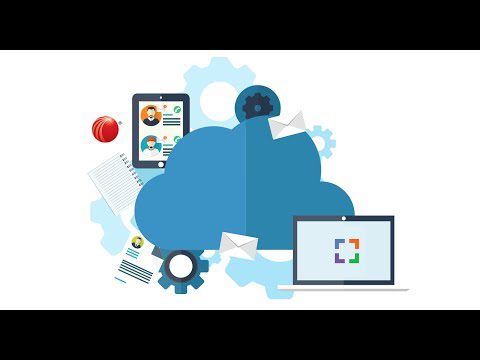How cloud-based law practice management software is powering the next generation of law firms

If you are leading a modern law firm, you already know the equation has changed. Clients expect speed and transparency, fee models are evolving, and hybrid work has blurred the boundaries of collaboration. The firms staying ahead are not necessarily larger, they are more connected.
At the heart of that connectedness is cloud-based legal practice management software, which has emerged as the strategic backbone that links every part of a firm’s operations. From client intake and workflow automation to billing and analytics, cloud-based software is reshaping how legal teams work, compete, and scale.
Why the cloud, and why now?
Two major forces are driving the shift:
Client pressure is reshaping delivery models: As hourly billing rates at law firms increase, clients expect clearer pricing, regular progress updates, and more transparency into what they’re paying for. Firms that deliver that level of visibility through smart, connected systems are the ones building long-term trust and repeat business.
Cloud is now the legal industry’s default: About 75% of attorneys now use cloud tools (up from 69% in 2023). Among larger firms, adoption exceeds 90%.1 What was once a cautious experiment is now the operational norm.
For law firms, the takeaway is clear: cloud technology is the foundation for agility, client satisfaction, and compliance readiness.
H2: How modern legal practice management software transforms firm operations
The right legal practice management software turns disjointed processes into connected, data-driven workflows that enhance accuracy, accountability, and client experience. Here’s where leading firms are seeing the biggest gains.
H3: Intake that qualifies, not just captures
Progressive firms treat intake as the start of client success, not just an administrative step. Templatized intake forms and automatic conflict checks streamline onboarding and reduce risk.
Focus on:
- Standardized forms and workflows that fast-track compliant matter intake
- Automated conflict and risk assessments built into the intake workflow
- The ability to trace every action, decision, and approval across the pursuit lifecycle
H3: Resourcing that prevents last-minute scrambles
Modern calendars sync seamlessly across Outlook and Teams, pulling in key matter deadlines, and availability of fee-earners. To staff proactively, firms must use matter pipeline data and skill mapping to ensure the right talent is in place for upcoming work. Focus on:
- Insights around workforce health, engagement, and resourcing across teams and regions. Receiving notifications on rising attrition or drops in engagement
- Overseeing real-time utilization and workload trends
H3: Timekeeping, billing, and “zero-touch” collections
Time capture and billing automation are where many firms see immediate ROI. Passive time trackers integrated into Outlook and Teams, draft bills generated from activity codes, and automated payment reminders accelerate cash flow without adding administrative overhead.
Focus on:
- Passive time capture tools
- Exception-based billing review
- Integrated payment options and reminders
H3: Matter economics you can see and act on
Partners and practice leaders need real-time visibility into performance (budget burn, utilization, and margin health). A unified dashboard within your legal matter management software helps identify scope creep, task bottlenecks, or erosion of profitability.
Focus on:
- Real-time WIP and realization dashboards
- Alerts for staffing imbalances or budget variance
- Post-matter reviews to refine pricing and delivery models
H3: Security that is practical for lawyers
Good technology quietly protects sensitive data without slowing work. Cloud systems provide built-in encryption, access controls, and ethical walling, while enabling secure remote collaboration. The right configuration balances security and usability.
Focus on:
- Role-based permissions and “least privilege” access
- One-click ethical walls and permission expiry
- Multifactor authentication and device-level policies
H3: Native Microsoft 365 integration
Most legal teams already live in Outlook, Word, Excel, and Teams. The ideal legal practice management software integrates directly with these tools, letting lawyers file emails, edit documents, and update matters without leaving their workspace.
The future of law firms will be driven by connected platforms
For firms exploring what’s next, Microsoft Industry Cloud for Law Firms offers the blueprint. It brings together the familiar Microsoft 365 ecosystem, Azure’s enterprise security, and Dynamics 365’s business intelligence into a single, legal-ready environment.
With built-in compliance, legal finance analytics, and workflow automation, it enables firms to modernize on a platform they already trust, without sacrificing control or data ownership. Solutions from technology partners like sa.global extend this further with tailored functionality for matter management, billing, and law firm business development.
The result: a future-proof foundation that connects people, data, and decisions across every part of a law firm, securely, intelligently, and at scale.
Conclusion
Cloud-based legal practice management software has evolved from an IT decision into a firmwide growth strategy. It’s how firms are:
- Capturing more time without micromanaging
- Collaborating securely from anywhere
- Reducing administrative burden
- Delivering faster, more transparent client service
With client expectations at their highest, the firms that align technology with their business model today will define the competitive standard tomorrow.
FAQs
- What is a cloud-based legal practice management software, and how does it differ from traditional systems?
- A cloud-based legal practice management software is a web-based system that assists law offices in handling matters, clients, and billing from a single secure online location. Unlike traditional on-premises systems, cloud-based tools run entirely online so firms don’t need local servers, complex maintenance, or version updates. Everything is accessible anytime, from any device.
- What key features should law firms look for in a cloud-based legal practice management software?
- Law firms should look for capabilities like matter management, time tracking, billing, workflow automation, and built-in collaboration tools. Real-time dashboards, role-based access, and data security features make the platform scalable and compliant.
- How does cloud-based law firm management software support remote and hybrid work models?
- It helps lawyers to access matters, share documents, and update clients in real time from anywhere, anytime. This helps maintain a high level of productivity and smooth communication across locations.
- What are the cost and scalability advantages of adopting cloud-based solutions for law firms?
- Cloud software operates on subscription billing, eliminating the need for initial server or hardware expenditures. Companies only pay for what they consume and can quickly scale up or down as teams or caseloads expand. Updates, backup, and security are taken care of automatically, lowering IT overhead.
- How is cloud-based legal practice management shaping the future of legal operations and firm growth?
- By connecting every part of the practice — people, matters, and finances — firms gain real-time visibility and agility. The result is stronger client relationships, better profitability, and a more efficient way to run a law firm.
Data Sources
- ABA 2024 Cloud Computing TechReport: https://www.americanbar.org/groups/law_practice/resources/tech-report/2024/2024-cloud-computing-techreport/

Source: How cloud-based law practice management software is powering the next generation of law firms




